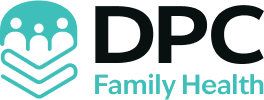TL;DR:
- Direct Primary Care (DPC): Flat monthly fee ($50-$100) for primary care, no insurance billing.
- Key Features: Extended appointments, minimal waits, ease of communication, basic lab work, and preventive care.
- Pros: Personalized care, better patient outcomes, medication cost savings, and high patient satisfaction.
- Cons: It does not cover specialized care or emergencies, flat fees may burden low-usage patients, and there is a risk of a two-tiered system.
- Comparison: More cost-effective than concierge medicine and focuses on patient-centred care, complements traditional insurance.
- Satisfaction Factors: Longer visits (30-60 mins), frequent interactions, better preventive care.
Do you ever feel like your doctor’s visit ends before it even begins? What if I told you there’s a way to spend more meaningful time with your doctor without breaking the bank? Welcome to Direct Primary Care (DPC)—a healthcare model shaking things up by offering unlimited access to your doctor for a flat monthly fee. But is it all sunshine and rainbows? Let’s weigh Direct Primary Care pros and cons so you can decide if it’s the right fit for you and your family’s health needs.
Understanding Direct Primary Care: An Overview
Direct Primary Care (DPC) is a healthcare model that provides personalized care. You pay a flat monthly fee to your primary care provider, bypassing traditional health insurance. Unlike the insurance-based model, they offer a direct relationship between you and your doctor. It’s like having a gym membership but for your health needs!
With longer appointments, minimal waits, and ease of communication via phone or email, you’re not just another number. Plus, without insurance billing, doctors can reduce paperwork, giving them more time to focus on your health.
Key Features of DPC
- Flat monthly fee covering a range of primary care services
- Extended appointment times for thorough visits
- Minimal wait times for timely care
- Easy communication channels like phone and email
- Reduced administrative costs for more patient-focused care
With DPC, you get a tailored healthcare experience. The flat fee structure means you know exactly what you’re paying each month, eliminating surprise bills and co-pays that come with traditional insurance. And because doctors aren’t bogged down by insurance paperwork, they can take on fewer patients and provide better care overall. It’s a win-win, making healthcare more accessible and less stressful.
Pros of Direct Primary Care

Direct Primary Care (DPC) offers a truly personalized patient care experience. Imagine a doctor who knows you by name and takes the time to understand your medical history without rushing. This model brings back the essence of personalized healthcare, where you feel more like a person and less like a chart number.
Another standout advantage is improved patient outcomes. DPC practices emphasize preventive care and routine check-ups, making it easier to catch potential health issues early. Regular interactions with your physician help manage chronic conditions better, leading to healthier long-term outcomes. It’s like having a health coach who’s always in your corner.
Another major plus is medication cost savings. Many DPC practices offer generic medications at wholesale prices, significantly cutting down prescription costs. No more sticker shock at the pharmacy! This makes managing your medications easier on your wallet while still getting quality care.
Finally, patient satisfaction tends to skyrocket in DPC settings. With easy access to your doctor through phone or email and minimal appointment wait times, you get the care you need when needed. The strong relationship forged with your provider ensures you feel heard and valued.
| Advantage | Description |
|———————————-|—————————————————————————–|
| Personalized Care | Longer, more thorough appointments with your doctor |
| Improved Patient Outcomes | Focus on preventive care and routine check-ups |
| Cost Savings on Medications | Access to generic medications at wholesale prices |
| High Patient Satisfaction | Better access and stronger relationships with providers |
| Minimal Wait Times | Quick and easy access to medical care when you need it |
DPC is all about bringing back the human touch in healthcare. DPC makes healthcare feel less like a chore and more like an investment in your well-being by focusing on personalised care, improving patient outcomes, and offering cost-effective medication options. With these benefits, it’s no wonder patient satisfaction is through the roof!
Cons of Direct Primary Care
Direct Primary Care (DPC) isn’t a one-size-fits-all solution. One major drawback is the need for additional coverage for specialized care, hospitalizations, major surgeries, or emergency room visits. Since DPC focuses on primary care, you’ll still need insurance or another form of coverage for these significant and often costly services. While you might save on routine care, you could still face high out-of-pocket expenses for serious health issues.
The flat fee structure can be a financial burden for some, especially if they don’t require much medical attention. Paying a monthly fee might seem like a waste of money if you’re healthy and rarely visit the doctor. The cost may outweigh the benefits for those who only need occasional check-ups, making DPC less attractive.
Critics argue that DPC could contribute to a two-tiered healthcare system. This means only those who can afford the monthly fee might receive enhanced primary care, leaving others with less access to high-quality care. This could widen the gap between different socioeconomic groups, creating disparities in healthcare access and outcomes.
Main Disadvantages of DPC
- It does not cover specialized care, hospitalizations, or emergency room visits.
- Flat fees may be a financial burden for low-usage patients
- Potentially creates a two-tiered healthcare system
- Requires additional insurance for comprehensive coverage
Cost Analysis of Direct Primary Care

Direct Primary Care (DPC) offers patients unlimited access to their primary care physician for a flat monthly fee, typically ranging from $50 to $100. This model eliminates the need for traditional insurance billing, making healthcare costs more predictable and straightforward.
DPC’s consistent monthly fee is often lower than traditional insurance premiums. While insurance plans can be costly and come with additional out-of-pocket expenses like co-pays and deductibles, DPC provides a transparent and all-inclusive cost structure. This makes it a cost-effective option for many, especially those who frequently need primary care services.
However, it’s important to note that DPC is designed to complement, not replace, traditional health insurance. While DPC covers most primary care services, you might still need insurance for specialized care, hospitalizations, or emergency room visits. So, in essence, DPC can save you money on routine care but should be paired with a traditional insurance plan for comprehensive coverage.
Typical Services Covered by DPC Memberships
- Unlimited primary care visits
- Extended appointment times
- Basic lab work and diagnostic tests
- Preventive care and wellness check-ups
- Discounted or wholesale prices on medications
DPC offers a healthcare “all-you-can-eat” buffet for a flat monthly fee. This setup simplifies your healthcare expenses and encourages you to seek care when needed without worrying about surprise bills or navigating insurance complexities.
Comparing Direct Primary Care with Traditional Care Models
Direct Primary Care (DPC) vs concierge medicine: what’s the difference? While both models focus on patient-centred care, concierge medicine typically has a higher price tag. You’ll often pay an annual retainer fee plus per-service charges, making it more exclusive and less cost-effective than DPC.
DPC eliminates the headache of insurance billing, reducing administrative burdens. This allows doctors to spend more quality time with their patients. No more waiting for insurance approvals or dealing with stacks of paperwork. The streamlined process means you get more face time with your doctor, and they can focus on what truly matters—your health.
What about Medicare? Medicare doesn’t cover DPC membership fees directly. However, some DPC clinics still accept Medicare patients and bill separately for services not covered under the DPC plan. This can be a bit of a balancing act, but it’s doable if you’re looking to make the most of both worlds.
| Care Model | Key Differences |
|——————-|———————————————————————————|
| Direct Primary Care| Flat monthly fee, no insurance billing, extended visits, lower administrative burden|
| Concierge Medicine | Higher cost, annual retainer fee, per-service charges, often more exclusive |
| Traditional Insurance| Insurance billing, higher administrative costs, shorter visits, coverage for specialized care|
So, in a nutshell, DPC offers a more affordable, less stressful alternative to concierge medicine and traditional insurance-based models. While it doesn’t cover everything, like hospitalizations or specialized care, the benefits of personalized attention, fewer administrative hassles, and predictable costs make it a compelling option for many. Just keep in mind those Medicare considerations if you’re in that boat!
Patient Satisfaction in Direct Primary Care

Direct Primary Care (DPC) offers patients longer, more personalized visits, often lasting 30 to 60 minutes. Compare that to the average 15-minute visit in traditional care. It’s like having a relaxed coffee chat with your doctor instead of a rushed speed date. This extra time lets doctors get to know you and your health needs better.
Frequent and thorough interactions with physicians are another big win. Because insurance restrictions do not limit you, you can see your doctor as often as needed. This leads to better preventative care and more effective management of chronic conditions. It’s like having a personal health coach who’s always available.
Reasons for High Patient Satisfaction in DPC
- Longer, more personalized visits
- Frequent and thorough interactions with physicians
- Better preventative care
- Effective management of chronic conditions
Patients love the DPC experience because it feels more personal and less rushed. With the focus on extended appointment times and frequent check-ins, you’re not just another patient file. You get the care and attention you deserve, making DPC a top choice for those seeking a better healthcare experience.
Final Words
Direct Primary Care (DPC) offers a refreshing shift from traditional healthcare. Patients benefit from personalized care and less time spent on paperwork.
On the upside, DPC provides better access to care and stronger doctor-patient relationships. It also reduces medication costs.
Conversely, the need for additional coverage for specialized care remains. The flat fee can be a financial strain, especially for those needing minimal medical attention.
Weighing the pros and cons of direct primary care, it’s clear that DPC offers a compelling option for many, ensuring thoughtful consideration for better health outcomes.
FAQ
What is a criticism of Direct Primary Care?
Direct Primary Care (DPC) critics argue it may contribute to a two-tiered healthcare system, where only those who can afford the monthly fee receive enhanced primary care services.
What is the benefit of direct primary care?
The benefit of Direct Primary Care is improved, personalized care with longer visits and minimal wait times, allowing for better preventive care and chronic disease management.
What are the risks of the direct care model?
The risks of the direct care model include the need for additional coverage for specialized care, hospitalizations, or emergencies, which DPC does not cover.
What are the disadvantages of primary care?
Disadvantages of direct primary care include added costs if patients require minimal medical attention, potential financial burdens for some, and the need for extra insurance for specialized services.
Is direct primary care worth it?
Direct Primary Care can be worth it for those who value personalized, accessible care with extended appointments and improved chronic disease management.
What is the direct primary care model?
The direct primary care model involves paying a flat monthly fee to a primary care provider, eliminating the need for traditional health insurance and offering direct access to care.
What is the typical monthly cost for Direct Primary Care?
Direct Primary Care memberships typically cost between $50 and $100 per month and cover a range of primary care services.
How does Direct Primary Care differ from traditional care?
Direct primary care differs from traditional care because it eliminates insurance billing, reduces administrative burdens, and allows more time for patient care.

